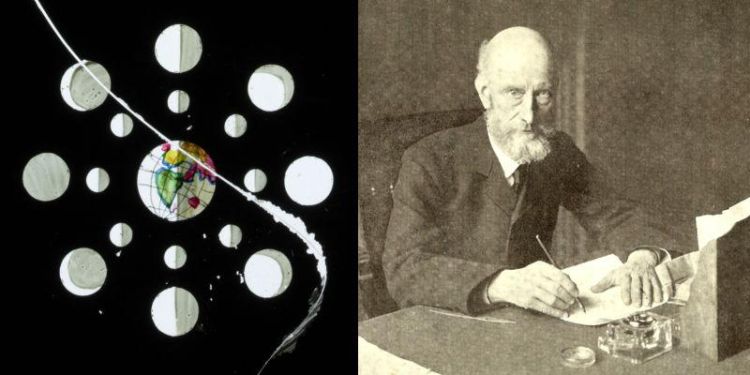Student exhibitions explore the History of Science, Technology and Medicine

Students explore debates at the intersection of contemporary art, museum practice and science communication.
One of the core course modules on the MA Curating Science and Technology — Interpretations — gives students the chance to curate their own exhibitions, working with the rich cultural collections located on the University campus.
Scientific collections featured strongly in this year's Interpretations module. One group of students worked with the Museum of the History of Science, Technology and Medicine to develop the exhibition Lighting the Way: Leeds and the Magic Lantern. The display focused on magic lanterns and their influence on teaching methods at the University of Leeds from the mid-nineteenth century.
The exhibition launched on the 13 December 2018, drawing positive feedback from staff and visitors alike. Student curator Stuart Bowes, currently on the MA Art Gallery and Museum Studies, said of the experience:
"It’s strange to think how prevalent magic lanterns were a century ago and yet now they are largely forgotten. Investigating the Museum’s collections of lanterns, slides and attachments for our exhibition felt like rediscovering a lost world, yet one not so different from our own.
"I believe their fascination lies in their versatility: our exhibition barely scratched the surface of the varied contexts in which they were used and the diverse subjects that they displayed."
Co-curator Liam Jackson, also an MA Art Gallery and Museum Studies student, said:
“I think that, overall, the experience was great. Working in the Museum of the History of Science, Technology and Medicine was a real pleasure as we were constantly discovering new things down in its stores. The whole module was a nice blend of theoretical and practical learning for skills you would need within a museum."

Lighting the Way: Leeds and the 'Magic' Lantern exhibition at the University of Leeds, December 2018
Students Carrie Scott-Huby and Tianyao Ju also gained insights from the course. Carrie said:
“Interpretations gives heart to the core of curating and the practical project gives an opportunity to consolidate what we have learnt from theories of curating."
Tianyao said:
"The module on the History of Modern Science helped a lot with understanding the different cultures in museums, galleries and cultural organisations. I realised that science communication has always played a significant role between curators and visitors, and I learned of some models I could apply to engage audiences effectively."
Dr Liz Stainforth, Lecturer in Heritage Studies and Programme Director for Curating Science and Technology, said:
“It’s fantastic to see students engaging with the history of science and technology through the university’s collections. I am excited to see how this new MA course is going to continue to open up perspectives on this field.”
The MA Curating Science and Technology course is collaboratively taught across the School of Fine Art, History of Art and Cultural Studies and the School of Philosophy, Religion and the History of Science.
Main image credit details
Lantern slide showing the moon and its phases (courtesy of the Museum of the History of Science, Technology and Medicine at the University of Leeds); Professor Louis Compton Miall (Photo by E. E. Unwin).




